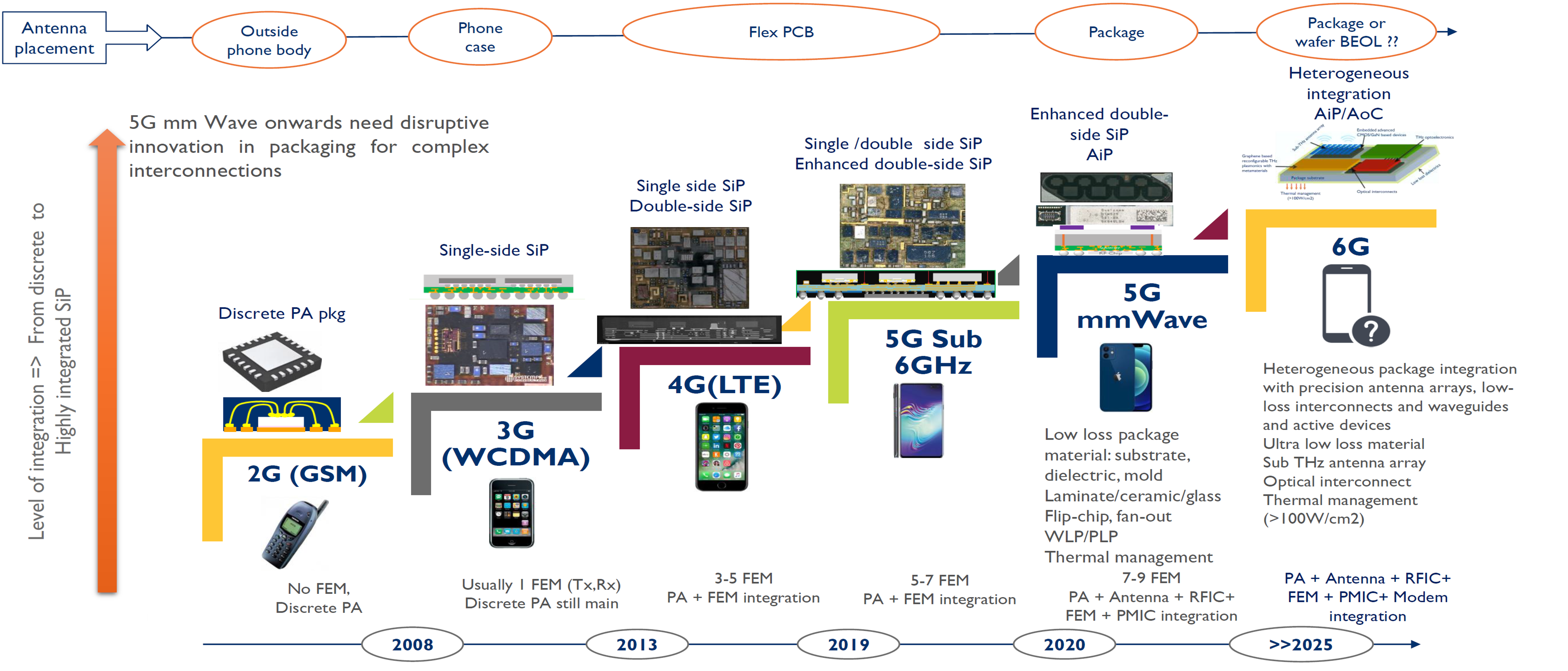Revolutionizing Crucial 6G Antenna in Package (AiP) Design

If you wanted to watch a video on your phone, would you stop to consider bandwidth or the strength of your cell service? Chance are, not anymore. But it wasn’t always like this. The evolution of cell phone technology and the networks they rely on have revolutionized our access to information. Much of this transformation can be attributed to the advancements within the 5G network, the backbone of most modern phones. While we enjoy the benefits of 5G, numerous experts, such as Dr. Rashaunda Henderson at the University of Texas, Dallas, are already hard at work on 6G, the next generation of wireless technology.
The advent of 6G wireless has driven a shift from the lower frequencies typically used for communication purposes to millimeter-wave frequencies, ranging from 30 to 300 GHz. These larger frequencies offer a broader bandwidth, higher data transmission rates, better capacity, and lower latency in a less-crowded space. In traditional design approaches, antennas and packaging are often developed separately, leading to potential conflicts and compromises when integrating them into a final product.
With 6G wireless pushing applications into millimeter-wave frequencies, antenna-in-package (AiP) technology has emerged as a vital solution for next-generation wireless systems. AiP co-design involves optimizing both the antenna design and the package design to achieve desired performance, functionality, and manufacturability. AiP offers substantially reduced antenna size and minimized interconnect distance between antennas and chiplets, resulting in enhanced performance.
Dr. Rashaunda Henderson’s SRC-funded research at University of Texas, Dallas, delved into the intricate electrical and mechanical characterization of packaging substrates and over-mold compounds, specifically tailored for antenna-in-package design and reliability. This endeavor was greatly enriched by the invaluable guidance and industry expertise provided by liaisons representing renowned companies such as Texas Instruments, NXP, Intel, and MediaTek.

Dr. Henderson and her team achieved significant milestones by successfully developing a slot bowtie antenna and an E-shaped patch antenna optimized for operation in the G band (140-220 GHz). One of the key innovations of their AiP solution lies in its utilization of a WR5 rectangular waveguide in package, effectively mitigating radiation issues and boasting substantially enhanced bandwidth and radiation patterns, positioning it as a game-changer in the realm of wireless communication technologies.
These breakthrough designs were seamlessly integrated into Texas Instruments’ automobile transceiver front end, showcasing their practical applicability and relevance in real-world settings. Dr. Aditya Jogalekar, who was employed by Texas Instruments following the completion of his PhD, serves as an exemplary case of technology transfer by direct hire. Now serving as a liaison, Jogalekar continues to support TI's endeavors while facilitating further collaboration between liaisons, principal investigators, and scholars. Notably, the project team also included doctoral candidates Oscar Medina and Visakhan (Kannan) Vijayan Nambiar. Moreover, Dr. Henderson has a commendable record of inspiring women to pursue careers in microwave engineering, as evidenced by former students Yali Zhang and Nikita Mahjabeen. This commitment to nurturing talent underscores the vital role of mentorship and inclusivity in driving innovation and progress within the field.
View Dr. Henderson’s GRC AMS-CSD project 2810.056, https://app.pillar.science/projects/4531/overview



